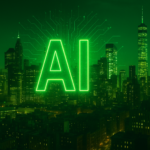OpenAI is making strides to solidify its capabilities in the artificial intelligence domain. The company aims to enhance its computational power by developing a state-of-the-art data center in Abilene, Texas. With significant funding backing the project, this move reflects a broader trend among AI companies to invest heavily in infrastructure to meet growing technological demands. As part of this initiative, OpenAI seeks not only to expand its own resources but also to reduce its dependence on external partners, pointing to an ambition of greater autonomy in future projects.
Earlier mentions of OpenAI’s efforts to develop new data centers did not emphasize the scale of funding or the specific location of construction. Investments in AI infrastructure continue to soar, but few companies have secured as substantial financial commitments as OpenAI has with this current venture. In past reports, collaborations with partners such as Microsoft (NASDAQ:MSFT) were highlighted more than independent endeavors like the current one in Texas, demonstrating a newfound direction of self-reliance for OpenAI.
What is the Funding Structure?
The Abilene project has received $11.6 billion in funding commitments, combining debt and equity resources. Start-up Crusoe, working alongside OpenAI, announced that this capital injection would support the expansion of the center from two to eight buildings, increasing the total investment in the initiative to $15 billion. This substantial funding ensures the data center’s completion by next year, enhancing its operational scope significantly.
Why is this Development Significant?
The expansion signifies a vital component in OpenAI’s strategy to minimize reliance on Microsoft for developing cutting-edge AI models. By bolstering its infrastructure, OpenAI is positioning itself to independently handle the complex demands of next-generation AI deployments. This development is integral to OpenAI’s plans to eventually manage its own data centers, reflecting a broader industry trend toward self-sufficiency among leading tech firms.
The project involves equipping each building with up to 50,000 Nvidia (NASDAQ:NVDA) Blackwell chips, which are instrumental for training sophisticated language models. Such robust computational capabilities are necessary to keep pace with the rapidly evolving landscape of AI technology.
Elsewhere in the AI spectrum, recent studies indicate the current limitations of AI agents in mastering human-equivalent tasks. AI models like OpenAI’s GPT and Anthropic’s Claude 3.5 Sonnet are evaluated for their performance in various roles. Despite advancements, these systems show significant constraints when undertaking tasks common in professional fields, including software development and project management.
Insights from the Carnegie Mellon research highlight the ongoing need for human oversight and intervention, stressing the additional time required for AI to function independently in real-world environments. The investment in AI systems, therefore, is as much about enhancing human productivity as it is about replacing human labor entirely.
As investments like those into OpenAI’s data center gain traction, the immediate future of AI seems directed towards augmenting human capacity rather than achieving full automation. By pursuing projects that strengthen their technological base, companies are better equipped for future innovation while addressing current operational needs.










